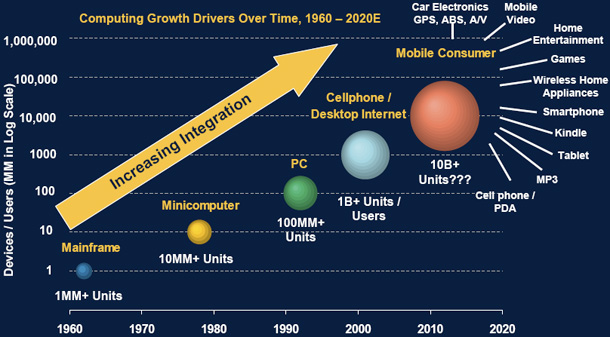Move to Mobility Continues With Misunderstood iPad
/ For all the controversy around the recently introduced Apple iPad, one thing is certain. This is but one in a long series of devices which will continue to be introduced to the market as part of a computing revolution. The advent of these technologies combined with demographic shifts and global ism will fundamentally change everything about our world.
For all the controversy around the recently introduced Apple iPad, one thing is certain. This is but one in a long series of devices which will continue to be introduced to the market as part of a computing revolution. The advent of these technologies combined with demographic shifts and global ism will fundamentally change everything about our world.
Love it or hate it, the IPad is just one example of many more highly functional internet connected devices with more features delivered at lower and lower prices to come. These devices are highly mobile and will get smaller, becoming more imbeded into our daily lives.
The impact of products like iPad, combined with an increasingly available high speed Internet grid will eventually revolutionize each and every business model and organization existing today - and sooner than one might think.
When one reads analysis of the device, like Rueter's article " Publishers embrace iPad, but revolution unlikely", it shows how many continue to measure the success of an evolutionary product in terms of old paradigms. The device will not rescue a failing publishing industry, such is hope for the dying. It and its off spring to come, however, will lead the way to completely change how people produce, distribute and digest content; leaving the extant industry vanquished in its wake. Just look at the explosion of devices reflected in the graphic below.

The same is true for vast segments of the entertainment industry. When one reads that the iPad device underwhelmed Hollywood, people should laugh aloud. These devices were not designed to save the dinosaurs of that industry. However, they will be a part of redefining the entire method in which entertainment content is created, distributed and deployed as the demonstration below reflects.
Let's see the iPad for what it is. Not a savior but as part of a progression of innovations that will ultimately change everything.












